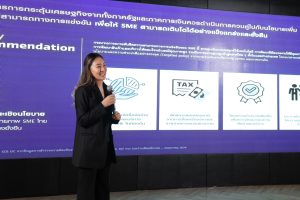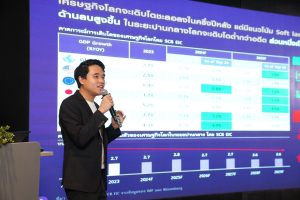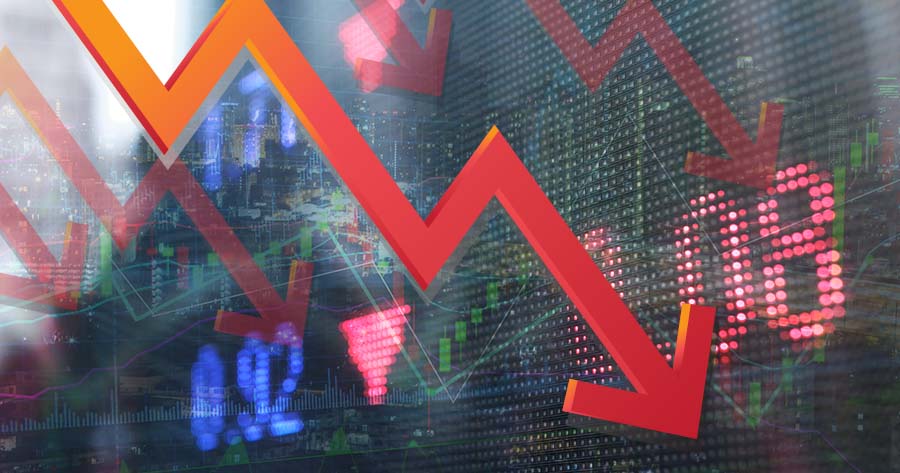The global economy is expected to slow in the latter half of this year following robust growth in the first half. Overall, global growth for 2024 is projected at 2.7%, with a slight uptick to 2.8% in 2025, indicating a soft landing. However, concerns over a potential hard landing, particularly in the U.S., are resurfacing due to rapidly rising unemployment rate, triggering recession warning indicators. Nevertheless, SCB EIC assesses that a soft landing remains more likely due to the strong momentum from major economies during the first half of the year and leading indicators suggesting continued growth in the near future. Additionally, the rapid rise in unemployment in the U.S. is partly due to a growing labor supply and not just solely a decline in hiring demand.
A key supportive factor for the global economy is the gradual reduction of interest rates by major central banks, as economic growth and inflation slow down. This trend will help cushion the economy and reduce the likelihood of a recession. By the end of 2024 and into 2025, the Federal Reserve (Fed) is expected to lower its policy rate by a total of 200 basis points (bps), while the European Central Bank (ECB) is likely to reduce its rate by 150 bps after a 25-bps cut in June. These lower inflation rates and interest rate reductions are expected to boost both domestic and international consumption.
However, international political tensions will likely slow global economic growth and increase vulnerability in the medium term. Lingering geopolitical conflicts will lead to adjustments in global supply chains and trade, accompanied by a rise in protectionist measures. These factors will hinder inflation and policy rates in most major economies from reverting to historically low averages. Post-election U.S. foreign policy will play a significant role in shaping the future dynamics of global trade. A Trump victory could hasten economic decoupling and global supply chain reconfiguration.
SCB EIC projects that Thailand’s economy will expand by a modest 2.5% and 2.6% in 2024 and 2025, respectively. Tourism will remain the primary driver for the Thai economy. SCB EIC forecasts 39.4 million foreign visitors in 2025, although this growth will be constrained by the slow return of Chinese group tours.
In contrast, Thailand’s export growth in 2025 will remain weaker than in the past, partly due to declining competitiveness. While industrial production is gradually recovering in line with improved exports, it continues to face headwinds from high inventories and weak domestic demand.
Private investment is projected to contract slightly this year but should resume modest growth next year, supported by a significant increase in Board of Investment (BOI)’s certificate approvals.
However, overall private investment will remain subdued due to slow growth in construction and delayed recovery in transporation investment, constrained by tight credit conditions. Private consumption will also slow, particularly in durable goods , especially automobiles, where sales continue to decline. Agricultural incomes are expected to contract due to declining prices of key commodities next year, further pressured by weakening consumer credit due to deteriorating credit quality, reflecting low consumer confidence, as seen in the SCB EIC Consumer survey 2024. This suggests an increasing tendency for consumers to cut back on non-essential goods and services spending. Government efforts to stimulate the economy will face greater fiscal constraints. SCB EIC estimates that while the digital wallet scheme involves substantial budget, its economic impact will be temporary and somewhat limited, potentially leading Thailand’s public debt ratio to reach the ceiling by 2027.
Most of the new government’s immediate economic policies reflect a continuation of the previous administration’s policies, albeit with an increased emphasis on supporting vulnerable households and businesses. SCB EIC assesses that short-term stimulus measures will benefit businesses related to consumption, tourism, and agriculture. Meanwhile, industries that rely heavily on low-wage workers are likely to experience increased cost pressures, and the energy industry might witness a drop in revenue. On the other hand, competitiveness-boosting policies will favor infrastructure-related businesses, industries aligned with global trends, and future industries. Environmental policies will pose both challenges and opportunities, requiring numerous businesses to adapt.
Structural challenges continue to weigh on the Thai economy. Specifically, 1) the automotive industry could lose around 40% of domestic production capacity if manufacturers fail to adapt to shifting market preferences, and 2) SMEs will face increasing pressure from weak domestic demand, compounded by competition from imports and outdated production and marketing practices. To ensure sustainable growth, these sectors will require short-term stimulus combined with long-term policies to enhance competitiveness.
SCB EIC anticipates the Monetary Policy Committee (MPC) to cut the policy rate in December, followed by an additional reduction early next year, lowering it to 2% as domestic demand softens. This is partly influenced by prolonged tightness in financial conditions.
The Thai baht has appreciated recently, driven by a weaker U.S. dollar, higher gold prices, and easing concerns over Thai political stability. In the short term, the baht may weaken slightly due to U.S. economic factors but will return to an appreciation trend as the Fed’s rate cuts cycle take place. By the end of 2024 and 2025, the baht is projected to move within the ranges of 34-34.5 and 33-34 baht per USD, respectively.











